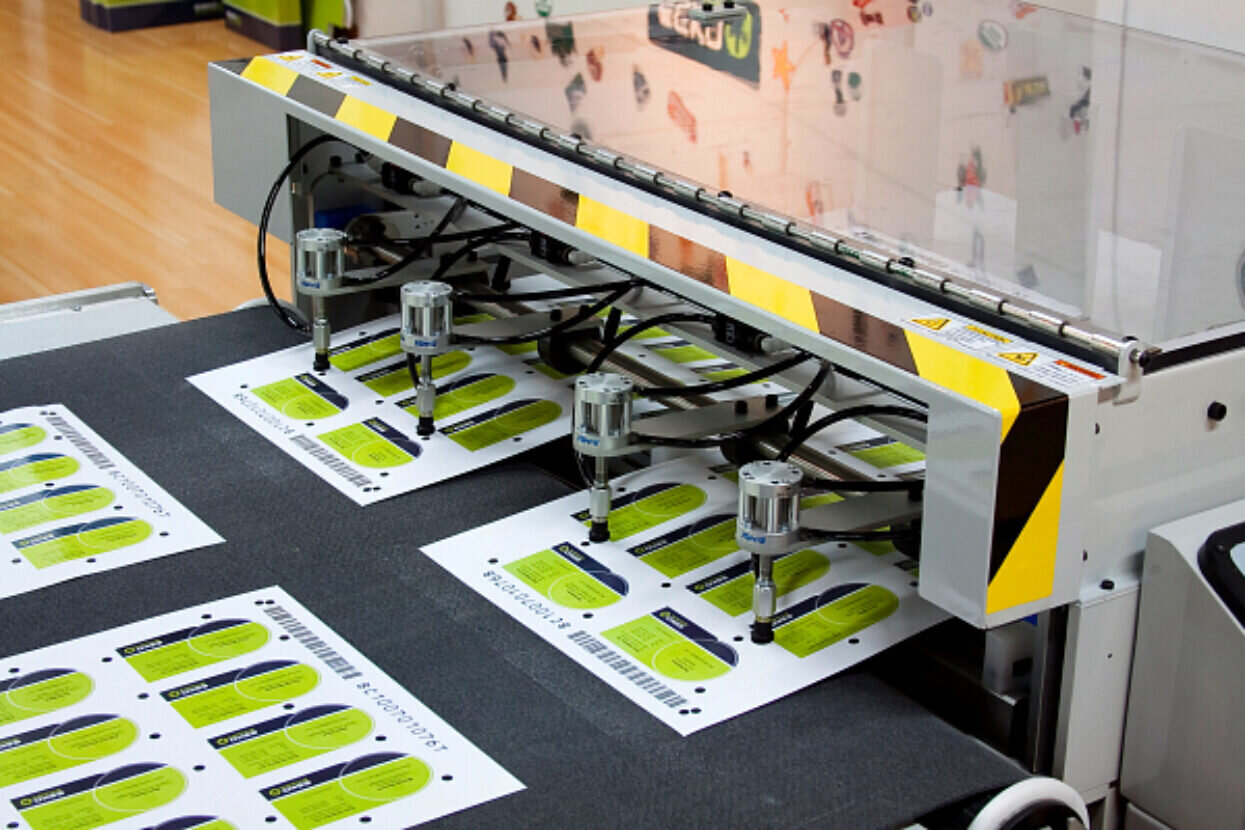
[Sponsored Content] When deciding what cutting table is right for your business there are some crucial factors to bare in mind. Luckily for you ESKO are on hand to talk you through the process.
Manufacturers of signage, displays, packaging and cut materials are confronted with an increasing amount of small batch production runs. This trend comes from the fast moving consumer goods and retail business.
Companies in this business continuously need to engage the consumer with appealing, customized, seasonal or even personalized messages. Promotional campaigns and regional localization shorten the production runs. A digital cutting table is the answer to this need for short run production. But what digital cutting table do you need? Ask yourself these five questions.
1. What do I want to produce?
2. What materials am I using?
3. Does size matter?
4. How fast is my digital press?
5. How to avoid bottlenecks?
What do I want to produce?
The type of jobs you produce is crucial in determining which table is ideal for you: Are you producing samples? Or are you a display or corrugated converter? Are you cutting printed or blank material? Are your customers willing to pay for speed or for impeccable quality? Or do they need both? The needs of a folding carton converter are not the same as the needs of a copy shop looking to offer personalized and custom shaped printed products.
If you’re looking for a cutting table to produce samples, you’ll value a machine that combines a short set-up time with quality. If you’re cutting and routing unprinted materials, you want a perfect balance between impeccable quality and high speed. If you’re producing advanced signage and marketing displays, you’ll want a cutting table that is up to the task and delivers profitable throughput without sacrificing quality.
What materials am I using?
You’ll want to impress potential customers with quality finishing on even the most demanding materials. Whether you are cutting blank material, or focus on sign and display production, it is essential that your digital cutting table can handle the widest range of materials possible. Only a versatile table with the necessary tools will be up to the task. And it’s not just the number of available tools that counts. A fast and smooth tool exchange is equally important. State of the art cutting tables ‘know’ what tools they are working with, and measure how thick the material is, eliminating possible cutting mistakes.

Does size matter?
If you are cutting printed materials, then the size of the cutting table depends on your digital press. Are you printing wide format or narrow format media? Sheet fed or on rolls, or both? If you’re cutting or routing blank material, the size of the cutting table will depend on the maximum size of the material you are working with. The perfect cutting table fits your setup. Digital cutting tables come in a wide range of sizes and there is one for every application.

How fast is my digital press?
Are you cutting printed material and do you have a high end digital press with an impressive throughput? Make sure your digital cutter can keep up with its speed and doesn’t become a bottleneck in your production. The performance of a cutting table is determined by the complexity of the design that needs to be finished. The linear cutting speed is only one of the factors to consider and it is very important to compare true production. The throughput of the cutting table consists of the number of jobs per day, the average number of sheets per job and the set-up time for every job. Cutting tables can be equipped with an automatic feeder, for feeding sheeted materials onto the cutting table, and a roll feeder for feeding rolls onto the table, and/or with an automatic output stacker, for stacking finished pieces. Once set up, the machine can run unattended freeing up the operator to do other work.

How to avoid bottlenecks?
Having a fast cutting table is not enough. Have you considered software that streamlines your workflow? You can eliminate errors, save time and reduce waste with pre production software targeted specifically at users of large format digital printers and/or digital finishing systems. Preflighting PDF files, preparing graphics, generating cutting paths, creating layouts, printing and finishing in perfect registration, it is all possible with dedicated software that seamlessly integrates with your press and/or cutting table.
Download the full guide to finding the perfect cutting table today.